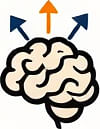Practical Strategies for Strategic Thinking and High-Agency Mindset
 by Marlene Keeling
by Marlene Keeling
Discover effective strategies for strategic thinking that empower individuals to take control of their decisions and actions. This article outlines practical drills to build a high-agency mindset, helping ambitious professionals achieve greater self-improvement through focused practices.

Strategic thinking serves as a key foundation for anyone aiming to build a high-agency mindset. It involves planning ahead and making deliberate choices that lead to personal growth. By focusing on strategic thinking, individuals can create paths that align with their goals.
Start with basic drills to sharpen your approach. One simple exercise is the daily reflection routine. Each evening, spend ten minutes reviewing your day's decisions. This helps in identifying patterns and preparing for future challenges. Through consistent practice, you strengthen your ability to act proactively.
Another effective method is scenario planning. Imagine different outcomes for your projects or career moves. For instance, if you're a professional seeking advancement, map out potential obstacles and solutions. This drill fosters a sense of control and encourages bold steps forward.
To make these strategies work, incorporate them into your routine. Begin by setting clear objectives. Write down three key goals for the week and outline the steps needed to reach them. High-agency mindset grows when you turn plans into action without hesitation.
Now, let's explore group exercises. Working with peers can enhance your skills. Organize a weekly discussion where team members share their strategies for overcoming setbacks. This not only builds your own capabilities but also inspires others to adopt similar approaches.
Building Habits Through Repetition
Repetition is essential for embedding these practices. Try the decision journal drill. Every time you face a choice, note the reasoning behind it and the results. Over time, this builds confidence in your judgment and reduces reliance on external input.
For example, if you're in a creative field, use brainstorming sessions to explore ideas. Set a timer for fifteen minutes and list as many options as possible. Then, evaluate them based on feasibility. This method trains you to think critically and act decisively.
Personal development often requires adapting to change. Use role-playing to simulate real situations. Practice how you would handle a difficult conversation at work. By doing so, you prepare yourself to respond effectively and maintain momentum.
Overcoming Common Barriers
Many face hesitation when starting new practices. Break this by starting small. Commit to one strategic thinking exercise per day, such as prioritizing tasks. This gradual approach makes it easier to build lasting habits.
Accountability partners can also play a role. Pair up with a colleague or friend who shares your goals. Share progress weekly and offer feedback. This creates a support system that keeps you motivated and on track.
In applying these strategies, remember to track your progress. Keep a simple log of your drills and note improvements. For instance, if you've been using scenario planning, review how often your predictions align with reality. This feedback loop reinforces a high-agency approach.
Integrating Strategies into Daily Life
To fully develop a high-agency mindset, combine these drills with everyday activities. During your commute, reflect on long-term aspirations and how current actions contribute. This integration ensures that strategic thinking becomes second nature.
Consider the goal-setting drill. Define specific, measurable targets and break them into actionable steps. For professionals, this might mean outlining career milestones and the skills needed to achieve them.
Action-oriented individuals thrive by focusing on outcomes. After completing a task, assess what worked and what didn't. Use this insight for future endeavors, turning experiences into valuable lessons.
Sustaining Momentum
Maintaining these practices requires ongoing effort. Schedule regular check-ins to evaluate your strategic approaches. Adjust as needed to stay aligned with your evolving goals.
Finally, celebrate small wins. Recognizing progress in your high-agency development keeps the process engaging and reinforces positive behavior. By consistently applying these strategies, you position yourself for continued growth and success.
